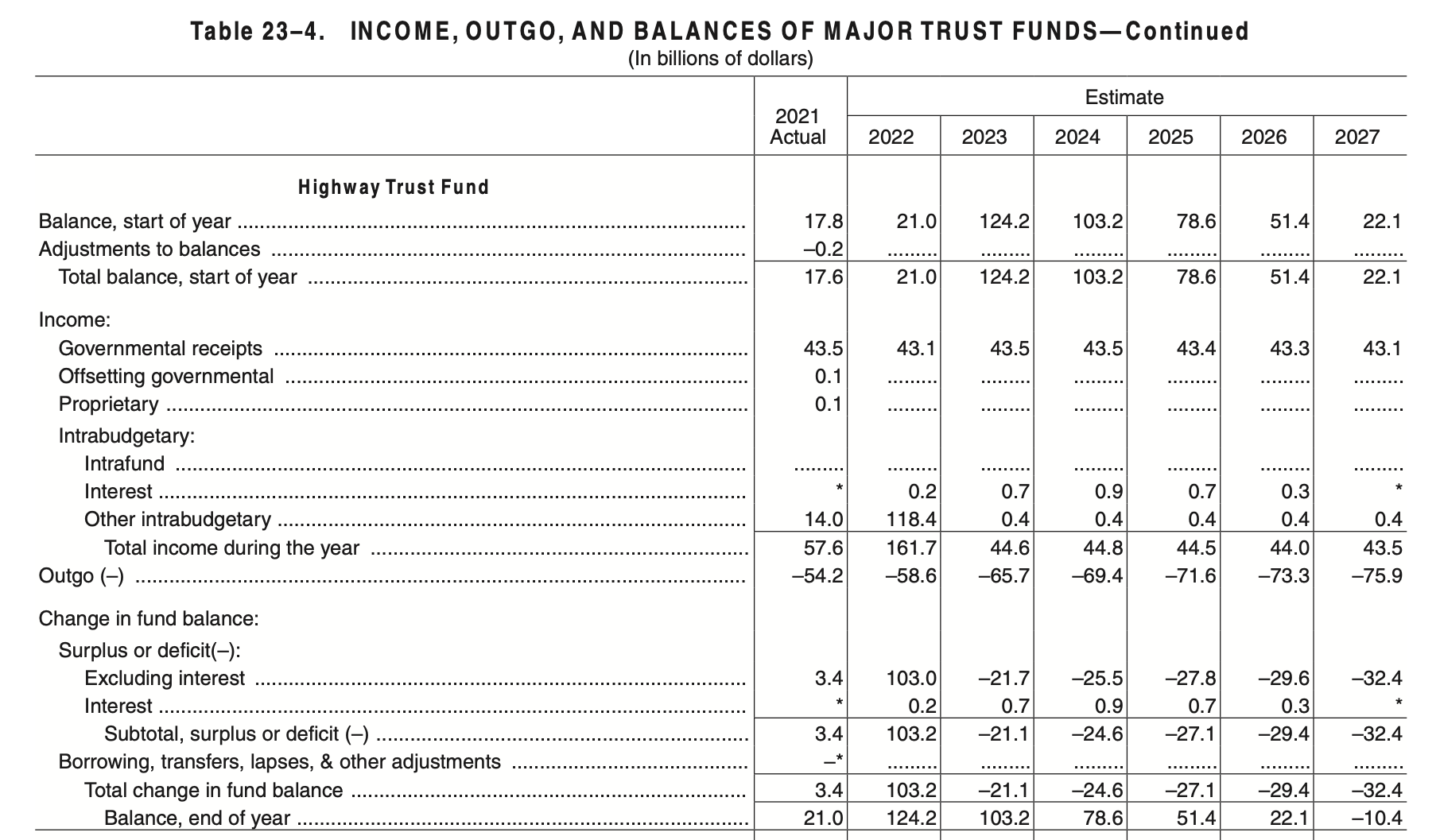After the Highway Trust Fund was reauthorized in the Infrastructure Investment and Jobs Act (IIJA) with a $118 billion general fund transfer instead of an actual tax revenue increase, all seasoned observers of federal transportation programs knew that once the IIJA was over, the systemic imbalance in the Trust Fund would be much worse than it had been before. The President’s Budget for 2023 gives us the first official estimate of just how much worse it will be.
Table 23-4 in the Analytical Perspectives volume of the budget shows projected cash flow in the HTF and the other major trust funds through fiscal year 2027. That projection shows the HTF remaining solvent through 2026 (the end of IIJA spending authorizations), with a projected $22 billion end-of-year balance, and then becoming insolvent midway through 2027, ending with a negative $10 billion balance.

But while Table 23-4 stops there, one can use other budget data to get five more years’ worth of projections, by pulling the tax receipt estimates from Table 11-3 and the outlay data from Table 26-1. Using that data, here is our projection of the next five years of Highway Trust Fund cash flow, if taxes are not increased and if annual spending levels are set at the final IIJA year (FY 2026) plus annual inflation increases, as in OMB’s projection:
|
FY 2027 |
FY 2029 |
FY 2029 |
FY 2030 |
FY 2031 |
FY 2032 |
| Beginning-of-FY Balance |
22.1 |
-10.1 |
-44.6 |
-82.0 |
-121.4 |
-162.4 |
| Tax Receipts and Interest |
43.1 |
43.0 |
42.9 |
42.8 |
43.1 |
43.6 |
| Outlays |
-75.5 |
-77.4 |
-80.4 |
-82.2 |
-84.1 |
-85.8 |
| End-of-FY Balance |
-10.1 |
-44.6 |
-82.0 |
-121.4 |
-162.4 |
-204.6 |
|
|
|
|
|
|
|
| Annual Cash Deficit |
-32.4 |
-34.5 |
-37.5 |
-39.4 |
-41.0 |
-42.2 |
Another five-year reauthorization bill after the IIJA would require close to a $170 billion general fund transfer (or that much in real excise tax increases, or some combination thereof) just to keep pace with inflation. Moreover, the annual revenue gap that needs to be filled will be, by 2032, almost as big as the annual excise tax receipts (i.e. you would need to double taxes to keep pace).
(Speaking of inflation, the annual increase in obligation limitations and other discretionary accounts for inflation assumed in 2027 and later years is 2.3 percent per year, which matches the economic assumptions in the President’s budget that were set on November 10, 2021. In light of recent trends, those may need adjusting.)
We will know more when the Congressional Budget Office releases its own projection, which will differentiate between the Highway Account and the Mass Transit Account and will have updated economic assumptions. We expect the CBO baseline in four to six weeks.




